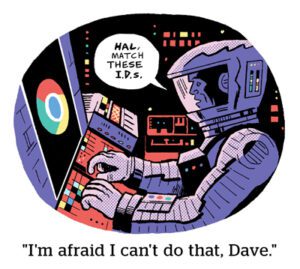 With additional reporting by Allison Schiff.
With additional reporting by Allison Schiff.
Scrap cat videos.
Google wants a piece of the $70 billion linear TV ad pie – of which $300 million-plus and growing is addressable.
As such, the tech giant unveiled a bunch of TV-related products and updates Wednesday at the National Association of Broadcasters meeting in Las Vegas.
Announcements included the addressable TV product DoubleClick Dynamic Ad Insertion (geared squarely toward TV broadcasters and distributors), an update to DoubleClick for Publishers (DFP) that keeps competing advertisers from appearing consecutively in the same TV ad pod and improved search for TV shows.
At the top of the stack was the intro of DoubleClick Dynamic Ad Insertion – a product that places Google in direct competition with video ad platform FreeWheel, which Comcast acquired in 2014. With Google in the fray, the gauntlet is down in a serious way.
“By creating individual streams for every viewer using server-side ad insertion, we are able to deliver a better, more personalized viewing experience that looks and feels as seamless as TV today,” wrote Daniel Algere, president of global partnerships for Google, in a blog post. “Not only will this work for both live and on-demand TV, but it works across directly sold and programmatic.”
Google put the technology to work over the past year through a series of beta tests with French TV programmer TF1 and Fox News. The broadcasters used DoubleClick Dynamic Ad Insertion to embed ads dynamically into live “tentpole” content, including the Rugby World Cup finals and the Republican presidential debates.
Google is also expanding DFP by creating “smarter TV ad breaks” for cross-screen and video ad serving for TV clients like AMC, Cablevision and over-the-top powerhouse Roku.
Marketing lingo aside, “smarter TV ad breaks” is normal in linear broadcasting. It’s basically a system that separates two similar advertisers – so Pepsi and Coke, for instance, won’t have adjacent ads in a single commercial pod.
The DFP expansion comes soon after Facebook’s LiveRail exited the video ad-serving business. Roku, which used LiveRail until a few months ago, “appears to have fully completed transitioning just in the past few weeks” to Google, said an AdExchanger source speaking anonymously because of their relation to both companies.
Google’s entrance into TV monetization, say industry insiders, is about more than capturing video market share from Facebook.
Another AdExchanger source said Google’s push for premium video on YouTube was just the “Trojan horse” it needed to pursue more TV dollars.
“All MVPDs realize that a tighter relationship with [tech and consumer-based companies like] Google, Facebook and Amazon is the rising tide that lifts all boats,” that source said. “They’re making very tangible, touchable proof points [about why they should be your TV tech partners].”
What’s On?
Beyond monetization and ad insertion, Google plans to tackle video discovery by surfacing TV listings in Google Search.
Basically, Google wants to be your TV Guide for OTT and linear.
When a user searches for a TV show or movie on Google, the results page will include information on where they can catch the content live on television.
Google search results already serve up which apps and sites users can hit to find whatever video content they’re looking to access (which smells quite a lot like MightyTV, the recently launched streaming content-discovery startup founded by Brian Adams, former CTO of Admeld, which sold to Google in 2011 for $400 million).
As consumers cut cords, more and more video discovery is happening on mobile devices. And as device fragmentation and the growth of OTT content continue their respective upticks, discovery is the new battlefield for eyeballs.
According to Google, searches for TV shows and movies on mobile are up 55% in the past year alone.














